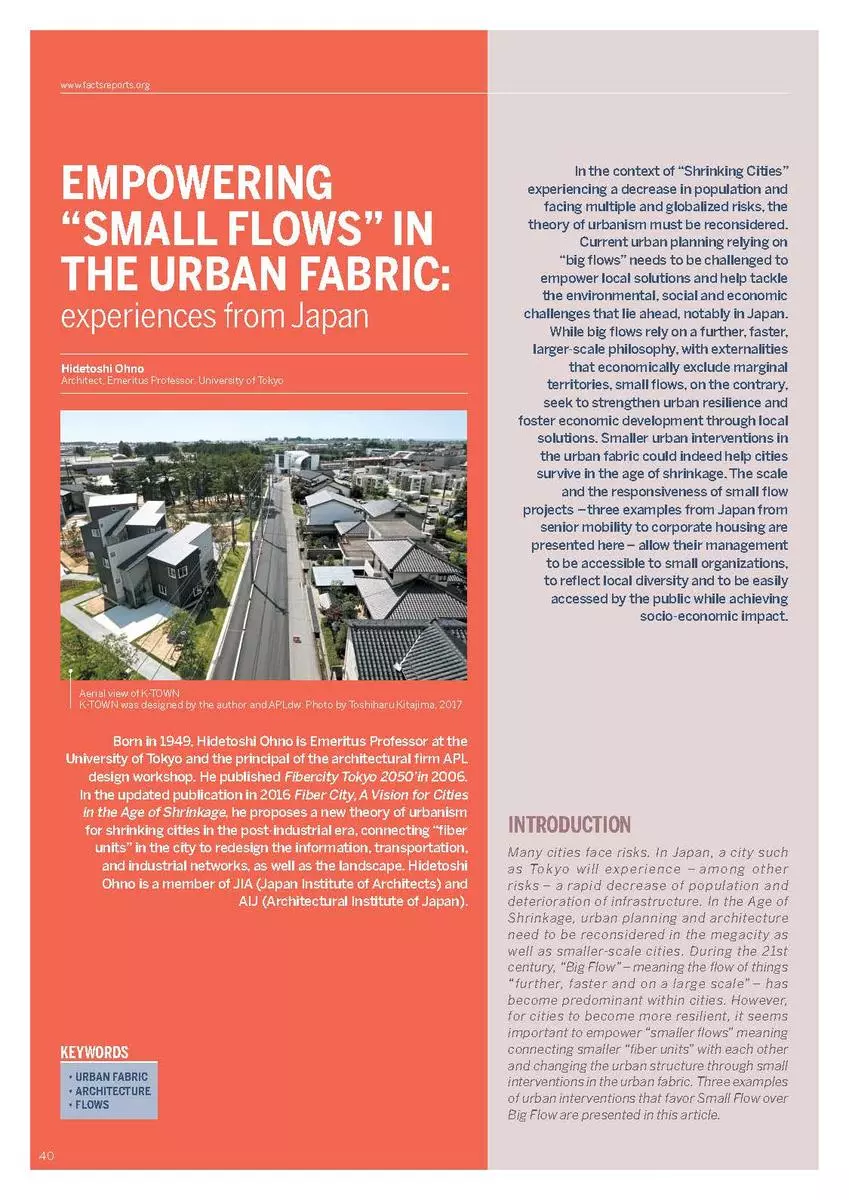By Hidetoshi Ohno, Architect, Emeritus Professor, University of Tokyo
In the context of “Shrinking Cities” experiencing a decrease in population and facing multiple and globalized risks, the theory of urbanism must be reconsidered. Current urban planning relying on “big flows” needs to be challenged to empower local solutions and help tackle the environmental, social and economic challenges that lie ahead, notably in Japan.
While big flows rely on a further, faster, larger-scale philosophy, with externalities that economically exclude marginal territories, small flows, on the contrary, seek to strengthen urban resilience and foster economic development through local solutions. Smaller urban interventions in the urban fabric could indeed help cities survive in the age of shrinkage. The scale and the responsiveness of small flow projects – three examples from Japan from senior mobility to corporate housing are presented here – allow their management to be accessible to small organizations, to reflect local diversity and to be easily accessed by the public while achieving socio-economic impact.



